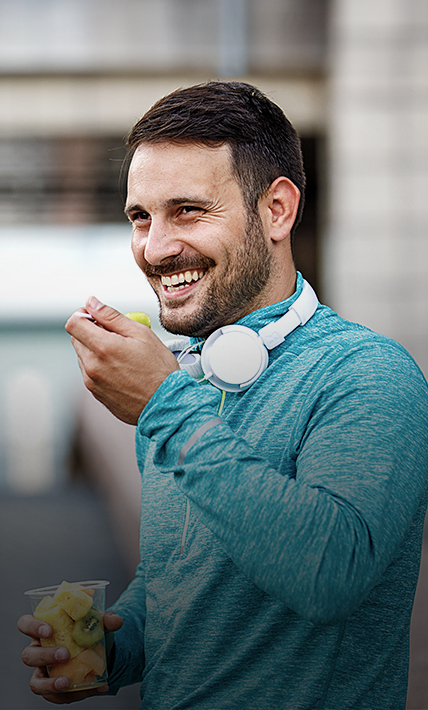Quick Links

Dry needling is a specialized physical therapy technique utilized at TriMotus to reduce discomfort and pain within the musculoskeletal system. Unlike acupuncture, trigger point dry needling targets muscles using fine needles, stimulating muscle contractions and promoting natural healing processes.
Muscular pain often becomes apparent after overuse of the muscle or inadequate blood supply, creating a trigger point where the patient’s nerves are highly sensitive. Dry needling effectively addresses these points, promoting improved blood flow and reducing pain and tension.
By reducing nerve sensitivity, dry needling effectively improves the range of motion, treating a variety of conditions like tendonitis, TMJ, and Carpal tunnel syndrome.
How Does Dry Needling Enhance Muscle Function?
While similar in appearance to acupuncture, dry needling differs in its underlying principles and aims to directly impact muscle function rather than influencing energy flow. By targeting trigger points within muscles, this technique promotes improved blood flow, reduced tension, and accelerated healing.
The therapeutic effects of dry needling are multifaceted and rooted in neurophysiological mechanisms. When a needle is inserted into a trigger point, it stimulates sensory receptors within the muscle, triggering a cascade of responses within the nervous system that enhance muscle function and alleviate pain.
By targeting trigger points in the muscle tissue, which are often associated with areas of increased muscle tension or hyperactivity, dry needling helps to normalize muscle tone and reduce excessive muscle contraction. This can lead to improved flexibility, range of motion, and overall muscle function.
Moreover, dry needling has been shown to promote improved blood flow to the targeted muscles. The insertion of needles stimulates local vasodilation, increasing blood circulation to the area thereby promoting muscle recovery.
Additionally, dry needling can trigger the release of endogenous opioids and other neurotransmitters such as serotonin and gamma-aminobutyric acid. Furthermore, the mechanical stimulation provided by dry needling can disrupt adhesions and scar tissue within muscles, promoting tissue remodeling and improving muscle function.
By breaking down these restrictions, dry needling restores the natural elasticity and mobility of muscles, allowing for smoother movement and enhanced function. Relief may not come all at once, but patients will experience significant pain relief and enhanced range of motion with each session that continues to improve every time.
How Do the Physicians at TriMotus Incorporate Dry Needling?
The TriMotus physicians will perform a routine physical exam to ensure dry needling is a safe and effective option for you. Once you are approved for candidacy, TriMotus will formulate your personalized pain management plan and walk you through the next steps.
During the session, the practitioner locates trigger points and gently inserts needles. Treatment duration and intensity vary based on individual needs, with subsequent sessions tailored accordingly.
Some patients may have their needle inserted shallowly, some may have a deeper-set needle; some patients will have their needles removed quickly, some may be left in place for a few minutes, and some may be gently moved within the trigger point. Post-treatment, patients may experience mild soreness, which typically resolves within 24-36 hours.
Initial sessions are usually the quickest since a TriMotus physician will start with only one or two needles. These needles may stay within the trigger point for a few seconds or twenty minutes, and more needles will likely be added to subsequent treatments if more pain management is needed.
The TriMotus approach to dry needling is distinct in that we focus on addressing a network of trigger points that contribute to poor movement patterns or protective muscle behaviors around a joint. By using dry needling to release these trigger points, the joint is “unlocked,” allowing for better mobility and less guarded muscle tension. This creates an optimal environment for rehabilitation, where the joint and surrounding muscles are ready to be retrained and stabilized. Essentially, the treatment prepares the joint like a blank canvas, allowing the rehabilitative team to restore proper movement patterns and stabilize the joint without the interference of protective muscle tone. This approach promotes long-term improvements in joint function and range of motion.
Candidates for Dry Needling
Dry needling offers potential relief for individuals grappling with chronic musculoskeletal or myofascial trigger point pain, regardless of age or specific condition. This includes:
Individuals experiencing chronic muscle tension often experience persistent discomfort and tightness from prolonged sitting, poor posture, repetitive movements, or stress. Dry needling can release knots and promote relaxation by targeting trigger points within these tense muscles.
Patients diagnosed with myofascial pain syndrome are characterized by the presence of trigger points. Dry needling is particularly effective in addressing these underlying myofascial trigger points, as it helps to deactivate them, relieve pain, and restore normal muscle function through improved blood flow.
Fibromyalgia patients with widespread musculoskeletal pain, fatigue, and tenderness in specific tender points throughout the body. Trigger point treatment can manage the pain and discomfort associated with fibromyalgia by targeting trigger points and promoting the release of endorphins.
Athletic individuals with musculoskeletal injuries, such as muscle strains, ligament sprains, and tendonitis, caused by repetitive movements, overuse, or trauma. Dry needling adds another therapeutic level of care that accelerates recovery, reduces inflammation, and restores optimal function.
However, it’s crucial to recognize that not everyone is suitable for this therapy. For example, pregnant women may need to consider potential risks and benefits before undergoing dry needling, as certain trigger points may need to be avoided during pregnancy. Similarly, immunocompromised patients should consult with their physical therapist to assess the appropriateness of dry needling in their specific circumstances. In certain cases, our physical therapists may recommend other physical therapy treatments.
What Is Dry Needling?
How Does Dry Needling Work?
What Are the Benefits of Dry Needling?
What Conditions Can Be Treated with Dry Needling?
Is There Research on Dry Needling?
What Should I Wear to a Dry Needling Appointment?
Dry Needling Safety and Considerations
38% Functional
27% Physical
35% Mindset


The Joint-by-Joint Approach
The joint-by-joint approach is used in exercise programming, rehabilitation, athletic performance, and functional movement screening. Though initially created as a chiropractic model, TriMotus utilizes the comprehensive approach in all its care to enhance movement efficiency, lower injury risks, and improve overall health and performance.
Read MoreAdditional Services
Looking for more? TriMotus offers an extensive range of options to ensure total body wellness. See more of our additional services below:
Maximize Your Performance
Learn more about our Executive and Athlete programs.
Whether you’re an athlete striving for peak athleticism or an individual seeking to excel in daily activities, TriMotus can unlock your full potential. Our holistic approach integrates cutting-edge techniques, personalized training programs, and proactive wellness solutions to help you reach new heights.
Learn More



